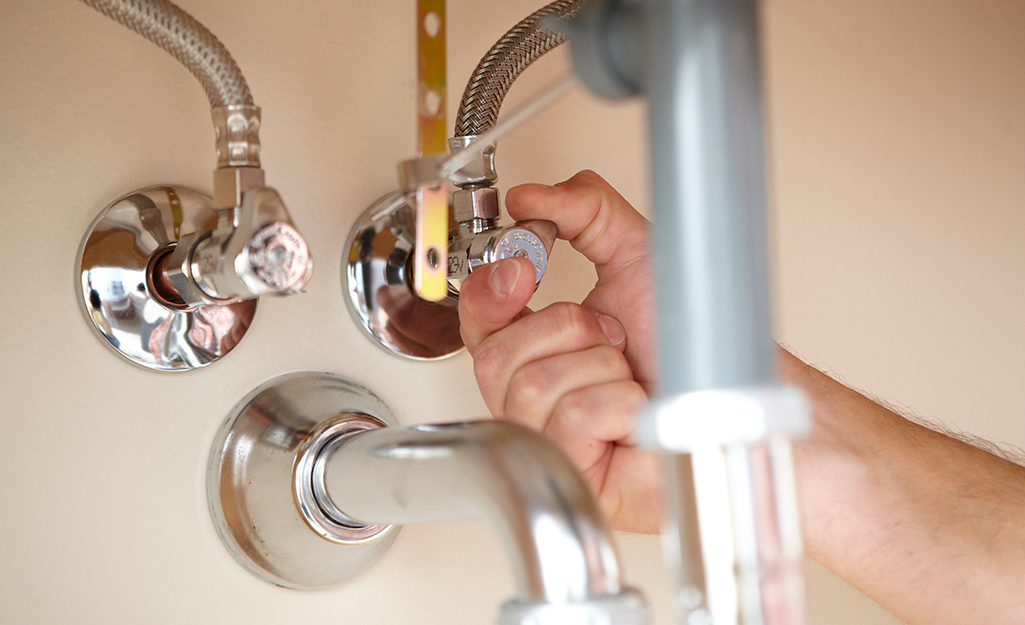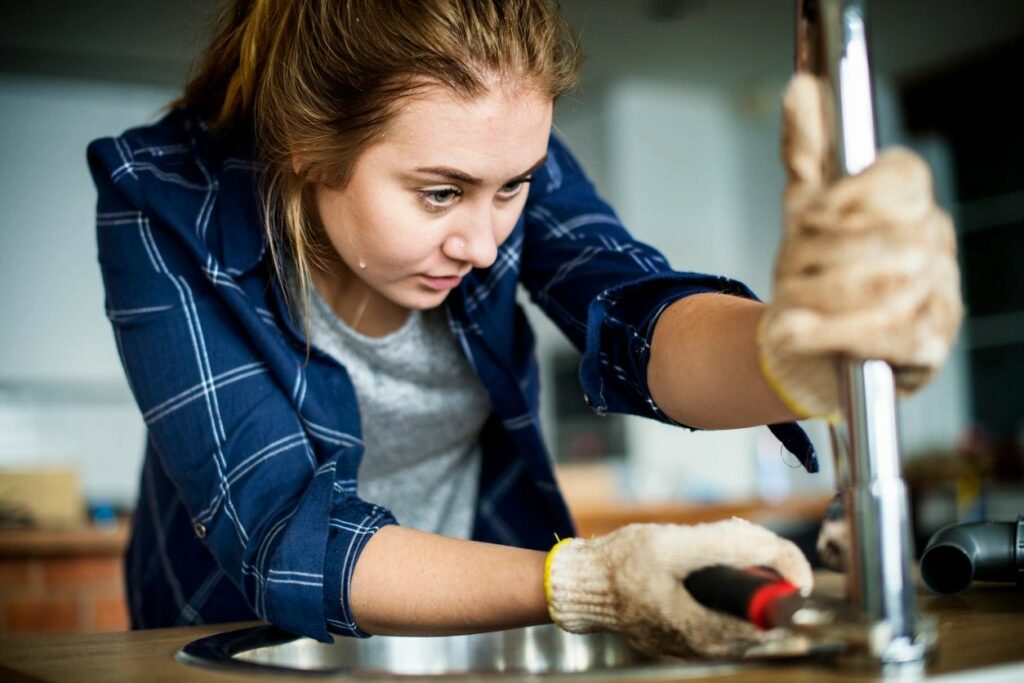Reasons Why It's Crucial to Repair a Leaking Faucet
Reasons Why It's Crucial to Repair a Leaking Faucet
Blog Article
We have found this great article about How to Fix a Dripping or Leaky Faucet below on the web and think it made perfect sense to quickly share it with you over here.

Trickling faucets may appear like a minor trouble, yet their impact exceeds simply the inconvenience of the noise. From drainage to incurring unnecessary monetary expenses and health and wellness dangers, overlooking a dripping faucet can result in various repercussions. In this post, we'll explore why it's critical to resolve this typical home issue quickly and efficiently.
Wastage of Water
Environmental Impact
Trickling taps add substantially to water waste. According to the Environmental Protection Agency (EPA), a solitary faucet dripping at one drip per secondly can throw away greater than 3,000 gallons of water annually. This not just pressures water resources but additionally impacts environments and wildlife based on them.
Financial Costs
Raised Water Expenses
Past the environmental impact, leaking faucets can pump up water bills considerably. The built up wastefulness in time converts into greater utility costs, which can have been prevented with timely repair work.
Possible Residential Property Damages
Furthermore, extended trickling can bring about damage to fixtures and surfaces bordering the tap. Water buildup can cause discoloration, deterioration, and also architectural issues if left unattended, resulting in additional fixing prices.
Wellness Concerns
Mold and Mold Development
The consistent visibility of wetness from a trickling tap produces a suitable atmosphere for mold and mold growth. These fungis not only jeopardize indoor air quality yet additionally pose wellness dangers, especially for individuals with respiratory system problems or allergies.
Waterborne Conditions
Stationary water in leaking faucets can come to be a breeding ground for bacteria and various other pathogens, enhancing the threat of waterborne illness. Impurities such as Legionella germs grow in stagnant water, possibly resulting in severe diseases when consumed or inhaled.
Do it yourself vs. Professional Repair service
Advantages and disadvantages of DIY Repair Service
While some may try to repair a trickling tap themselves, DIY repair services feature their very own set of difficulties. Without appropriate expertise and devices, do it yourself efforts can intensify the problem or result in insufficient repair work, prolonging the problem.
Benefits of Employing an Expert Plumber
Employing an expert plumber makes certain that the underlying source of the trickling tap is attended to efficiently. Plumbing technicians possess the competence and devices to diagnose and fix tap problems effectively, saving time and minimizing the threat of additional damage.
Step-by-Step Overview to Taking Care Of a Dripping Faucet
Devices Needed
Before trying to repair a trickling faucet, collect the essential tools, consisting of an adjustable wrench, screwdrivers, substitute parts (such as washing machines or cartridges), and plumber's tape.
Typical Tap Issues and Their Solutions
Recognize the type of faucet and the details problem creating the drip. Common issues consist of worn-out washers, corroded shutoff seats, or damaged O-rings. Describe producer directions or online tutorials for step-by-step assistance on repair work.
Preventive Measures
Normal Upkeep Tips
To stop leaking faucets, do regular upkeep such as cleaning up aerators, evaluating for leakages, and changing damaged components promptly. Additionally, consider setting up water-saving gadgets or upgrading to much more efficient fixtures.
Importance of Prompt Repairs
Addressing leaking faucets as soon as they're seen protects against more water waste and potential damages, ultimately conserving both water and money in the long run.
Influence On Property Worth
Understanding of Well-Maintained Residential Or Commercial Property
Maintaining a residential or commercial property in good condition, consisting of dealing with upkeep problems like trickling faucets, boosts its viewed worth and value amongst potential purchasers or tenants.
Influence on Resale Worth
Features with well-maintained plumbing components, consisting of taps, command higher resale values in the property market. Addressing dripping faucets can add to a favorable perception during residential or commercial property assessments and arrangements.
Ecological Duty
Specific Contribution to Preservation
Taking duty for dealing with trickling taps straightens with broader efforts toward water conservation and ecological sustainability. Every person's activities collectively make a considerable impact on preserving priceless sources.
Sustainable Living Practices
By prioritizing punctual repair services and embracing water-saving habits, individuals contribute to lasting living practices that profit both existing and future generations.
Conclusion
Resolving a leaking faucet exceeds mere ease; it's a vital step toward conserving water, lowering financial prices, and guarding health and wellness and property. Whether through DIY repairs or professional support, taking action to repair leaking faucets is a small yet impactful means to promote accountable stewardship of sources and add to a healthier, much more sustainable future.
Most Common Reasons for a Leaky Faucet and How to Stop the Drip
Whether it’s your kitchen faucet leaking or a bathroom faucet leaking, one leaky faucet can waste anywhere from three to 30 gallons of water every single day. If the constant drip-drip-drip doesn’t get your attention, your water bill will. The good news is that, by following a few simple steps, chances are pretty good you can fix the problem yourself.
Why is it dripping?
Before you start taking things apart, let’s break down some of the most common causes of a leaky faucet.
Bad O-ring.
A cartridge is a valve that controls the flow of water into the faucet spout. On cartridge faucets there’s an O-ring—the little disc attached to the stem screw that holds the faucet handle in place. If it’s loose or worn-out, it can cause your sink handle to leak. Of course, the cartridge itself could be worn out. If that’s the case, make sure you replace it with the exact same kind.
Corroded valve seat.
The valve seat connects the faucet and the spout. If the leak seems to be coming from the spout, it might be because a buildup of water sediment has corroded the valve seat.
Worn-out washers or seals.
A leaky spout could be caused by a bad washer that rests against the valve seat. It’s just a matter of time before friction takes its toll. It could also be the wrong size washer or one that’s been installed incorrectly. Water sediments can also corrode inlet and outlet seals.
Water pressure.
If the faucet only drips now and then, or when you turn the handles a certain way, you should probably check your home’s water pressure.
Loose or broken parts.
The adjusting ring and packing nuts in the stream screw can become loose over time, causing your sink handle to leak. Try tightening or replacing the packing nut. If the leak is coming from the pipes underneath the sink, you probably have a broken pipe or fitting. If that’s the case, you should definitely call a plumber.
Know your faucet.
Faucets come in a variety of types. Each one has its own assembly—and its own possible causes of leaks. Learning about the four most common kinds of faucets will help you know how to take them apart and make any repairs.
How to stop a leaky faucet
Fixing that leaky faucet doesn’t have to take a lot of time, money, or expertise. It’s usually a simple matter of replacing a worn-out washer or gasket, a loose O ring, or another part. Chances are really good you can do this yourself if you follow these simple steps.
Shut off the water.
Before you tackle the faucet, cut off the water supply to the sink. There should be one valve for hot and one for cold. Hand-turn them clockwise with your hands till they close. If there are no valves under the sink, head to the basement and shut off the main water supply to the house. Then turn on the faucet until it empties out the water that’s still in the line and you’re ready to start. It’s a good idea to cover the sink drain with a plug or a rag so you don’t lose any small pieces and parts while you’re working.

As an enthusiastic person who reads on What Causes Leaky Faucets & How To Fix Them, I think sharing that excerpt was a smart idea. If you enjoyed reading our blog posting kindly be sure to pass it around. I enjoy reading our article about What Causes Leaky Faucets & How To Fix Them.
Report this page